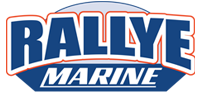Best Riding Practices on your Personal Watercraft

Personal watercraft allow us more thrills than virtually any other type of vehicle. It gets you on the water, which is an exhilarating experience in itself, and then combines that environment with a high-powered motor. Experienced riders know how to get the most out of their WaveRunner® or other watercraft, but anyone new to PWC operation needs some knowledge and practice to learn safe yet fun riding techniques. At Rallye Motoplex, we want you to get the most from your personal watercraft, so we created this guide to show you the ropes a little bit. Of course you’ll still need to get advice from other riders and actually get on the water to truly get into it, but this article is a great primer for anyone who needs a good foundation. If you don’t own a PWC yet, you can also stop by our dealership near Saint John and Bathurst, New Brunswick. We have an impressive selection of Yamaha equipment, including the new WaveRunner models.
Safe Riding
The key to any type of riding is safety, and this is especially relevant to personal watercraft riding. It all starts with mindset. You’ll be tempted to push it to the limit on your PWC, but you should always remember that careless decisions quickly lead to devastating accidents. Sometimes turns look easy before you come into them, but if you’re not used to the machine and try taking them too hard, you could wind up losing control or getting thrown from the watercraft. Overall, you need to get comfortable with the vehicle before doing tough maneuvers, and don’t push yourself beyond your skill level. Familiarity with PWC riding will come with time, so take it slow at first, and you can gradually take on greater challenges as time goes on. Also make sure to wear your lifejacket, attach your engine shutoff lanyard to your person, and avoid alcohol when riding. These are common safety measures that even experienced riders should abide.
Being Courteous
When driving on the highway, you wouldn’t cut off another driver (intentionally), ride someone’s bumper, or ignore a yield sign, so why would you do something blatantly rude on the water? Unfortunately a lot of PWC riders don’t take courtesy very safely, so here’s a few things it would be good to get into the habit of doing. First, even though there aren’t lanes in the water, you still want to keep your distance from other boats, especially when they have swimmers nearby. When passing, don’t just rush ahead of somebody. Honk your horn and signal that you want to pass before doing so. Also, a big problem on the water is riders not signaling before they turn. Unexpectedly cutting in front of someone is an easy way to cause an accident, so signal with your hand before turning across the water. Finally, personal watercraft are pretty loud, so try to avoid riding later in the evening when people nearby just want peace and quiet.
Knowing your Limits
A personal watercraft is powerful and agile, but there’s only so much it can do. Some PWC handle great, while others might not have the greatest turning radius for hard corners. You might be used to a WaveRunner that can turn on a dime, but don’t expect that every other personal watercraft will be so nimble. Before performing all those maneuvers on a new piece of equipment, make sure you familiarize yourself with its capabilities. This will take some time, but after some practice, you’ll figure out how to maximize your performance, safely.
Personal watercraft are actually pretty easy to ride properly, just as long as you use common sense to stay safe and ride courteously. Take your time, and eventually you’ll learn how to ride like a pro! If you have any other questions, or just want to check out our WaveRunner models and Yamaha PWC, stop by Rallye Motoplex in Moncton, where we also service Charlottetown and Fredericton, New Brunswick.

